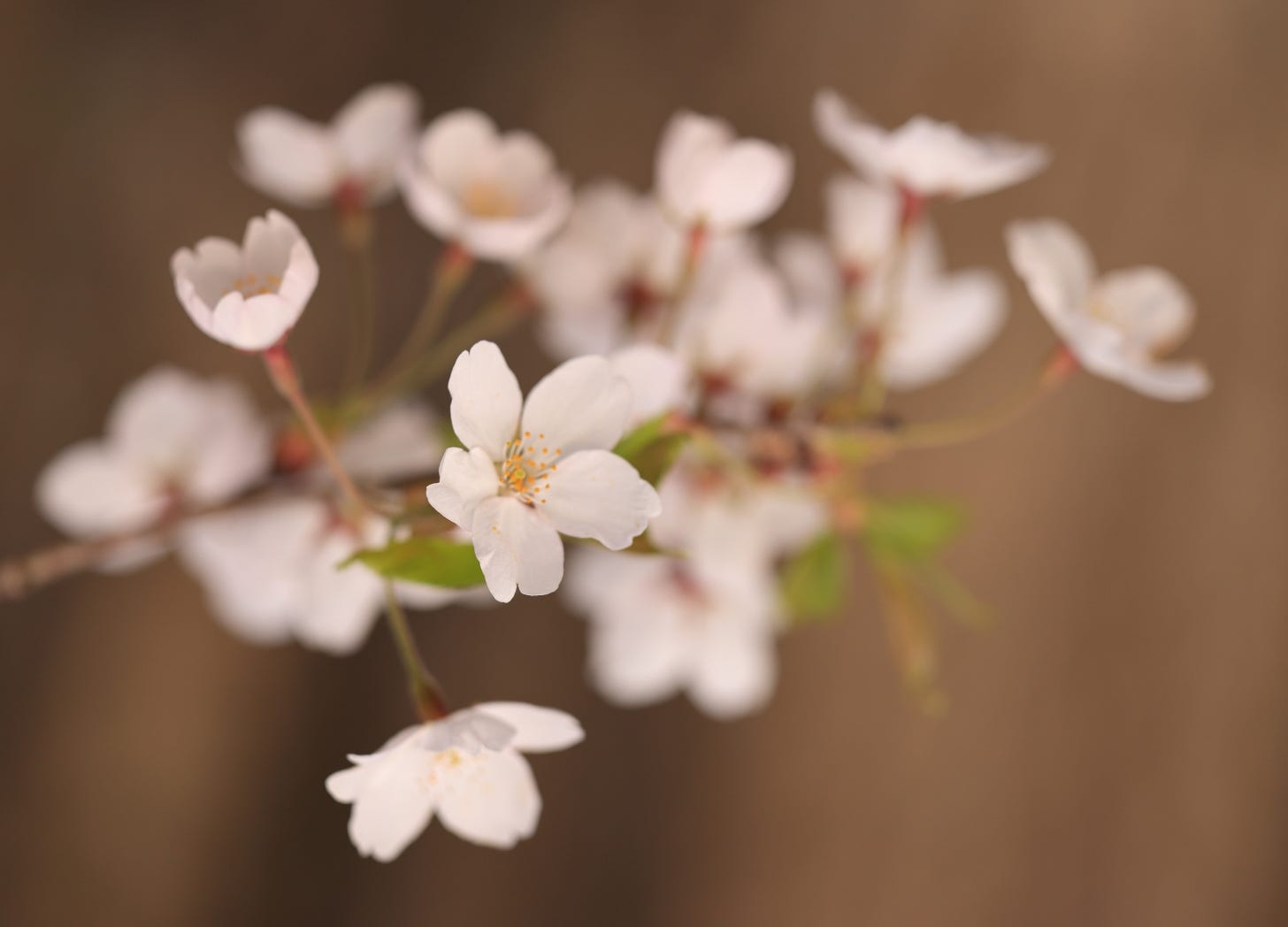Good News: Issue 3
Sea turtle success, oyster bed restoration, carbon capture in aquaculture, solar in Scotland, and butter made from air
Now that May is here, migration is in full swing. This week I discovered that my dog Willow, like me, is a birdwatcher. I noticed her quietly sitting in the backyard watching white-throated sparrows and dark-eyed juncos hop around her, feasting on seeds my daughters had scattered. They came within a foot or two, and she didn’t bark or pounce. To me, this is very good news.
As election signs come down, tulips and daffodils are sprouting up in their place, bringing some much-needed colour to the landscape. Cherry blossoms are in full bloom, and people have been flocking to High Park to witness the spectacle. I am always amazed by the snowy blossoms and the joy they bring. In a city where everyone is always in a hurry, it is refreshing to see people stop and appreciate nature’s beauty.
This Week’s Greener Good News Stories
Sea Turtles Are Making a Comeback
According to a study by the journal Endangered Species Research, marine turtle populations are starting to rebound. It has taken decades for turtles to recover, beginning in 1973 when the U.S. passed the Endangered Species Act, then in 1990 when Mexico banned sea turtle harvesting. While most threat impacts have decreased, however, there is still work to be done; accidental bycatch (when sea turtles get caught in fishing gear) continues to pose a threat. And one species, the leatherback turtle — which sometimes migrates up to 3,700 miles — remains vulnerable. The authors caution that conservation efforts must persist for turtle populations to continue recovering.
Read More at the Optimist Daily
Mississippi Teen Wins Award for Oyster Restoration
14-year-old Demi Johnson from Gulfport, Mississippi, has won a National Geographic Society award for her oyster bed restoration project, which has produced 1,500 oysters. She’s been volunteering with the Mississippi Oyster Gardening Program since grade 7, tending to underwater wire boxes of young oysters every week. The project aims to rehabilitate Mississippi’s oyster populations, which were decimated by Hurricane Katrina in 2005 and further damaged by an oil spill in 2010 and freshwater releases in 2019 and 2020. Oysters play an important role in the coastal ecosystem by filtering water, preventing erosion, and providing habitat for at least 300 marine species.
This One Ingredient Helps Aquaculture Capture Carbon
A research team led by Yale University has discovered that adding iron ore to fish farms can reduce carbon dioxide emissions and keep fish healthy. Iron ore naturally combines with hydrogen sulfide — a toxic gas that forms when microbes break down fish waste — and forms iron sulfide. The chemical reaction removes hydrogen sulfide, which can kill fish and harm surrounding marine ecosystems. It also makes water more alkaline, allowing it to absorb and store more carbon dioxide from the atmosphere. Researchers estimate that fish farms could reduce their carbon dioxide emissions by millions of tonnes yearly, transforming aquaculture into a carbon-neutral industry.
Scotland’s Largest Community Solar Farm Is Approved
The Glenkiln solar project, soon to be the country’s largest community-owned solar farm, recently secured planning approval. The solar array will stretch across 8.6 hectares (20 acres) with about 10,000 solar panels — enough to power about 1,250 homes each year. The project incorporates space for sheep grazing, and work will be done to restore habitat and improve biodiversity. Led by Arran Community Renewables (ACR), any profits generated by the solar farm will be held in a community benefit fund. The project could be complete as early as 2027.
Lab-Made Butter Renders Cows Moooot
Imagine if you could make butter appear out of thin air? Scientists are doing just that. California-based company Savor has created a creamy spread that’s chemically identical to butter — but more sustainable. Carbon gases like carbon dioxide and methane are subject to heat and pressure, transformed into carbon chains, and turned into fatty acids — and eventually fats. The company is also replicating fats like vegetable and palm oil.
According to Savor: “By starting directly with carbon gases, we bypass the lengthy, natural process which requires carbon to be captured by plants, for animals to eat those plants and for humans to then harvest, transform and refine them into fats. All of this uses huge amounts of land and water, requires an extensive supply chain, and releases substantial amounts of greenhouse gases in the process.”
Savor claims that lab-made fat has the potential to reduce greenhouse gases by at least 70% compared to coconut or palm oil production — and up to 100% if agricultural lands are restored. You can read their paper in the scientific journal Nature Sustainability.
Read more at the Optimist Daily
Have a great week! Wherever you are, don’t forget to stop, notice, and take it in nature’s beauty.
Yours for the Greener Good,
Brett



